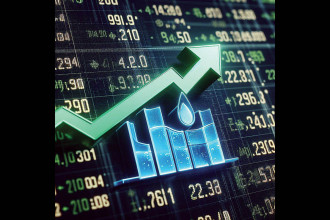
The commodity markets have long been considered as an alternative investment instrument as compared to the stock and the bond markets. The volatility inherent in the commodities traded has petrified financial experts and investors alike since they exhibit far more price variance than other asset classes. While some look at the volatility with fear, others cash into the impending opportunities. We all have essential knowledge about the commodity markets. How? Because we buy fuel to drive our vehicles, purchase food at nearby department stores, heat and cool our homes according to the seasons, and construct homes that involve definite building materials. In hindsight, we are all consuming commodities on a daily basis of various types of different magnitudes. Commodity prices are often the front line while deliberating the price pressure of other assets signaling deflationary or inflationary pressure. A trader monitoring the prices of raw materials can identify the shifting trends in other asset classes. Hence, the knowledge of commodity markets is imperative even if the corresponding investor does not trade directly in commodities. Commodities have always played a major role in the science and art of investing but the following reasons aggravate the importance to a whole new level.
Vivek Risal is associated with Mercantile Exchange Nepal Limited in the capacity of Manager in Research and Development Department. He can be contacted at r&[email protected]
DEMOGRAPHICS
Due to demographic trends, the impact of commodities on other asset classes is inclining on a daily basis. According to rough estimates till date, the total population now stands at 7.6 billion. Since commodities are finite assets, there can only be so much raw material production at a given price. The exponential growth in the population perpetually pressurises the demand and supply equation for commodities. In simple terms, as the population increases, it puts added pressure on the requirement of food, energy, materials and other essential commodities. The other impact of the demographic pressure on commodities prices is the increase of wealth around the world. The second largest economy of the world, China, offers the perfect example of increase in wealth and the resulting effect on the prices of commodities. With over 1.3 billion population, accounting for almost 19% of the world’s population, the demand for commodities has inclined to a point where China has become the demand side for many commodities over the past few years. When China observed a slowdown in 2014, the prices of most commodities lowered thereby reflecting the direct effect of the nation on all asset classes. The generation of fewer revenues affected other nations like Brazil, Australia and Canada and their currency depreciated. In observation, the effect of the slowing demand for commodities caused a chain reaction across all asset classes around the world. An example of how demographics have had a tremendous impact on a commodity is of the cocoa market. Historically, while the prices of many commodities moved downside from 2012-2015, cocoa provided a surprising turnaround on the upside over the same period. The strength of the cocoa market was due to the increasing demand for chocolate confectionery products in Asia. Having become chocoholics, the Chinese discovered the joy of chocolate along with the rest of the world. The demographic patterns had caused a price strength in the cocoa market.TECHNOLOGY
The rapid pace of technological development has enveloped the world into a smaller place. The great strides undertaken in communications aspects have created an environment where an event in one corner of the world influences asset prices around the world in a blink of an eye. The advent of computer systems has caused dramatic changes in all financial markets especially commodity markets. A person possessing a computer or even a smartphone has access to prices of commodities. While some commodity exchanges provide delayed prices with a 10 minute lag in their websites, others provide the privilege of viewing live price action. Further, electronic trading has allowed prices to move around the clock during trading sessions. Market participants have the ability to transact in an open and transparent environment with increasing information flow developing the transference of risk from buyers to sellers or vice versa.PRODUCTION-CONSUMPTION DYNAMIC
The production-consumption dynamic has changed over the course of the past few years. On the side of the producer, the boom and the declining markets have caused only the strongest and the lowest cost producers to have the ability to survive volatile markets. The most influential producers have built market share and increase their reserves of commodities as high-cost producers leave the market during periods of price declines. On the contrary, there have been numerous changes over recent years on the consumer side. As China is the largest consumers of commodity, investment in production has taken the form of joint venture and direct investments in commodity producing properties and businesses. The desire of the Chinese to ensure flow of commodities to the nation has resulted in the ownership of metal and mineral producing properties around the globe.POLITICS
Political factor also presents an important element in commodity markets. Since time immemorial, price and likewise, the availability of food have sparked revolutions and political change. As wheat is a major ingredient for bread, shortages and higher prices can have significant political changes in the world. Oil-considered to be a critical political asset has caused a shift towards energy independence in most oil-producing economies. Furthermore, as more than 60% of the global cocoa production comes from Ivory Coast and Ghana, many related works are the result of cocoa production and logistics to usher the major ingredients in the chocolate market.CONCLUDING LINES
The above factors highlight that the knowledge of the commodity markets is an imperative force for global traders. The information not only influences the prices you pay at the grocery or the gas stations but the value of each and every one of your investments. A trader is recommended to keep an eye on commodities prices since awareness of this piece of the jigsaw puzzle could enhance your returns and signal critical changes in the dynamics in financial markets that could save your capital at most times.Vivek Risal is associated with Mercantile Exchange Nepal Limited in the capacity of Manager in Research and Development Department. He can be contacted at r&[email protected]
Published Date: February 19, 2018, 12:00 am
Post Comment
E-Magazine
RELATED Commodity Perspective





